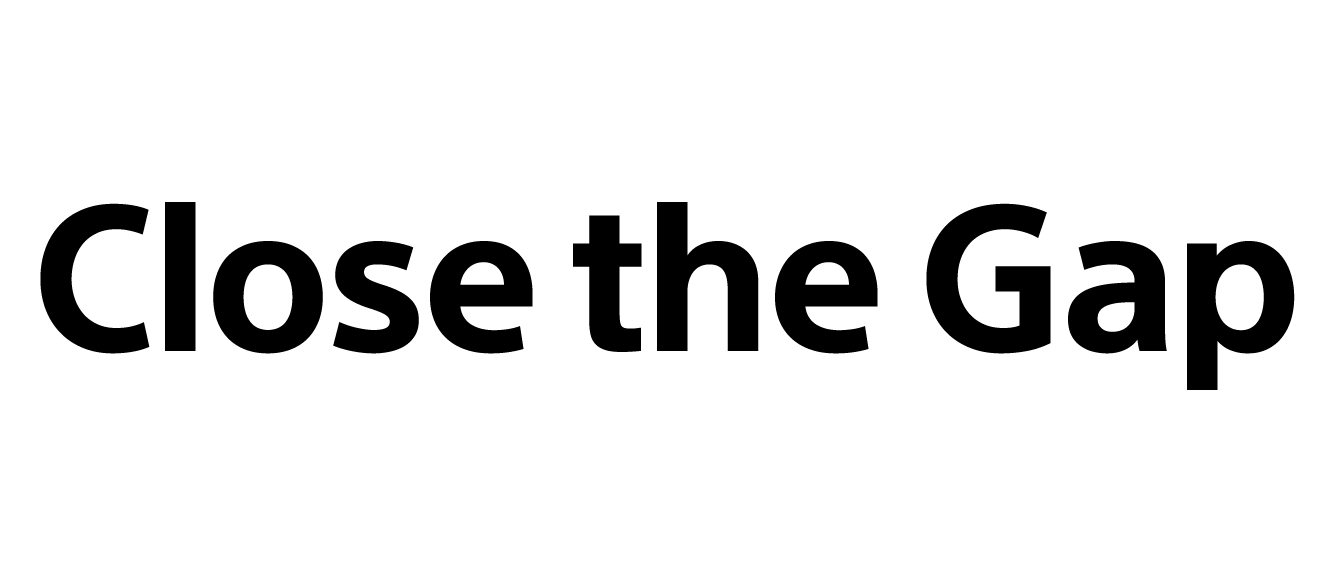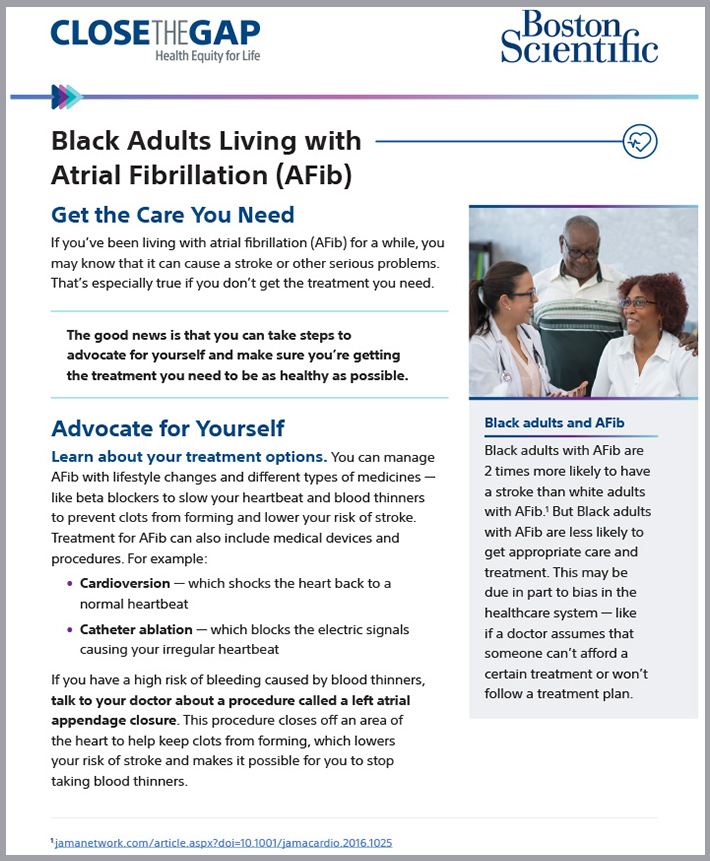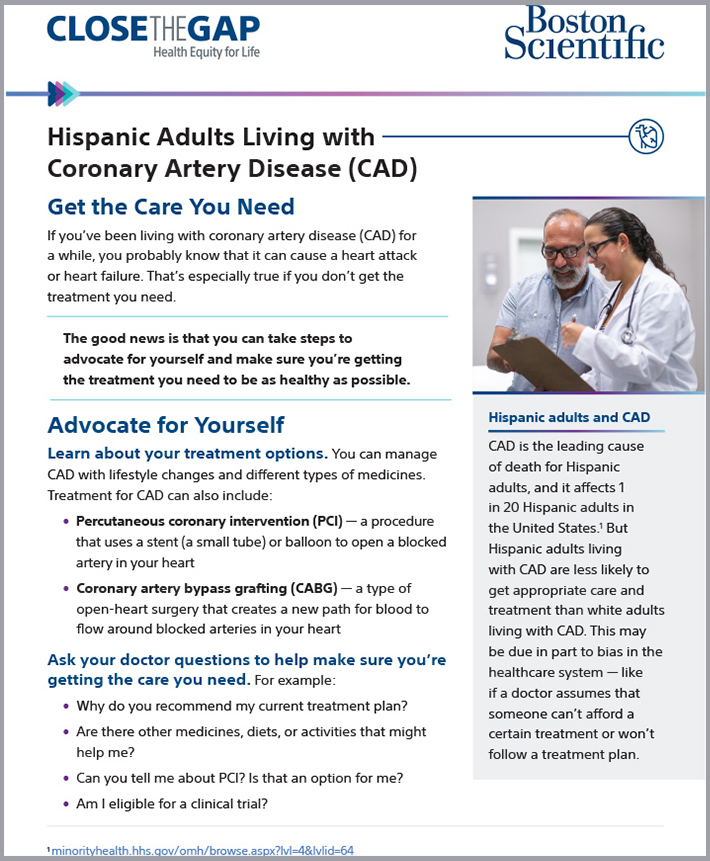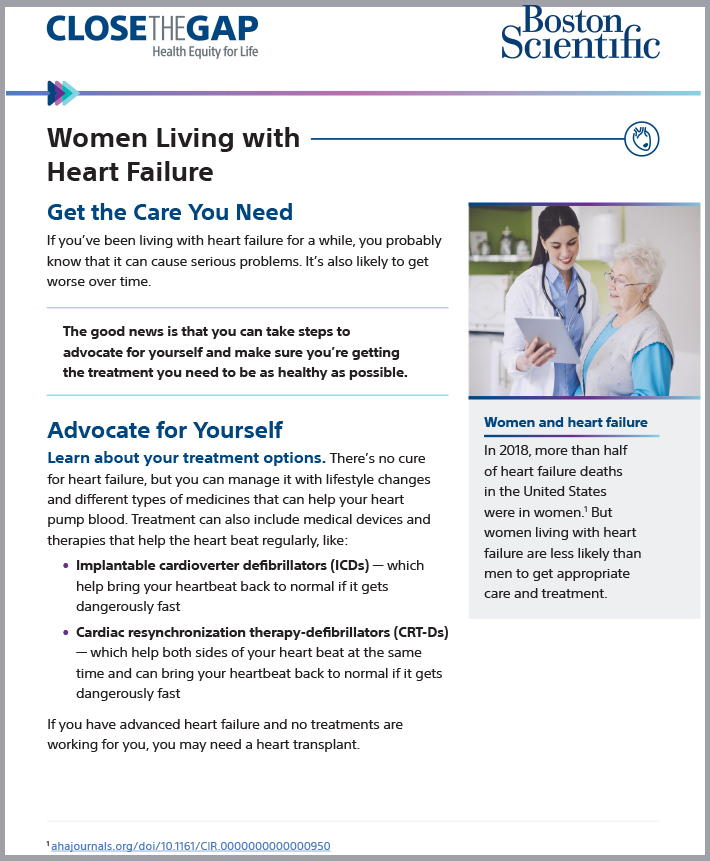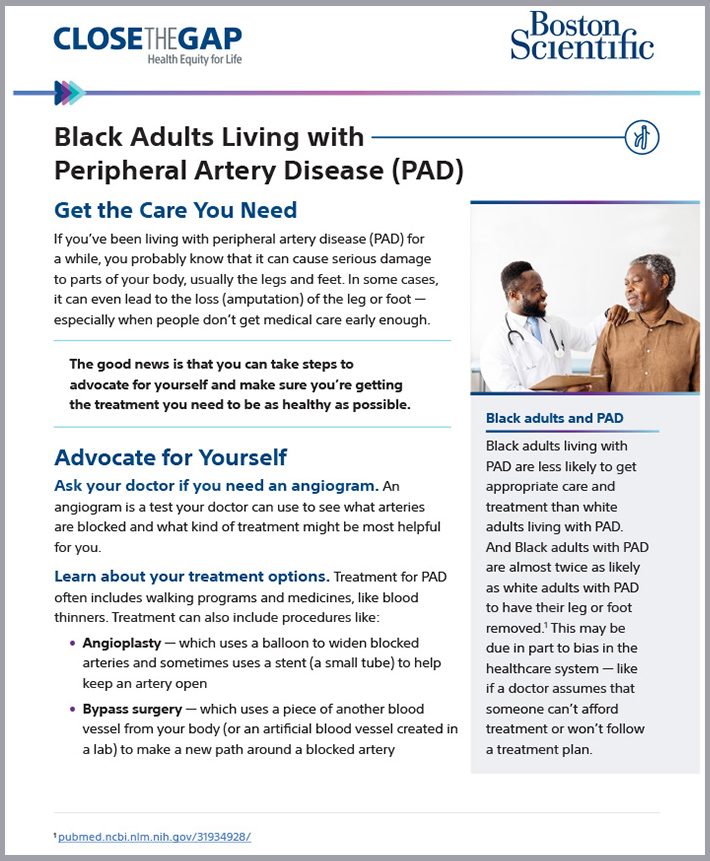
Patient resources
These resources – ready to print or share digitally – aim to help underserved patients feel more empowered while navigating their healthcare journey.
“Advocate for Yourself” materials
Close the Gap’s “Advocate for Yourself” materials – available in both English and Spanish – are written in plain language with a focus on cultural competency, to help make the resources easier to understand and use. To develop these materials, Close the Gap collaborated with CommunicateHealth – a leader in clear communication and health information design, whose clients include the Centers for Disease Control and Prevention (CDC) and the Centers for Medicare & Medicaid Services (CMS).
These materials are designed for Black, Hispanic, and women patients living with Atrial Fibrillation (AFib), Coronary Artery Disease (CAD), Heart Failure (HF), and Peripheral Artery Disease (PAD).
All PDFs have earned a score of 90% or higher on the on the Clear Communication Index and adhere to Accessibility Guidelines.
Quick Links
Atrial Fibrillation (AFib)
Coronary Artery Disease (CAD)
Heart Failure (HF)
Peripheral Artery Disease (PAD)
Provider resources
What do patients say is needed to break down barriers to care? Find fast facts about what underserved patients say prevent them from following the path to specialty care.
Heart and vascular disease insights
At-a-glance insights into disease-specific risk factors and disparities can help you implement outreach plans that work for people living with and at risk of cardiovascular disease in your community.
